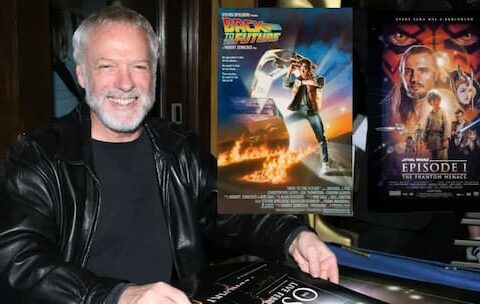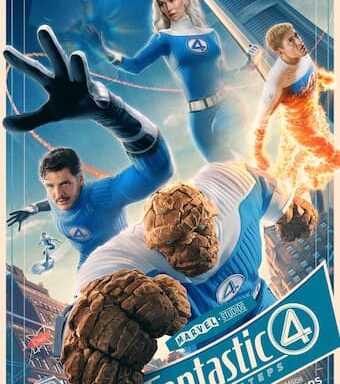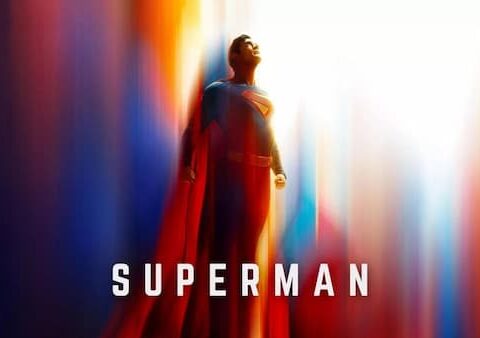It’s hard to overstate just how much I’ve been enjoying this second volume of Marvel’s Darth Vader series.
The level of quality is so high and so consistent that it really is a contender for the best monthly comic-book Marvel currently has going.
My review for the first several issues is here; and my review for the second arc (the superb Jocasta Nu arc) is here.
Darth Vader #11 takes us into the next arc, with Vader intent on finding the various Force-sensitive children that Jocasta had alluded to.
Instead he gets sidetracked into a trap, being attacked by bounty hunters. This isn’t a great issue, actually – probably the weakest of this series so far. It’s interesting to see Vader showing some mercy (sort of), which he does here: and for anyone who’s ever wanted to see a highway speed chase featuring Darth Vader, you’ll get your wish here.
But I started to realise here that there’s something about Vader’s team of inquisitors that isn’t sitting comfortably with me. I’m not sure why it should be a problem, maybe I just don’t like the characters. Or maybe it’s because I always envisioned Vader always operating alone – or, at most, with a small squad of Stormtroopers.
At any rate, the dynamic here is an equation in which no one trusts anyone else: Vader doesn’t trust his people, he doesn’t trust the Emperor, the Emperor doesn’t trust Vader, and everyone is potentially double-crossing everyone else.
This continues in Darth Vader #12, where Vader comes under attack when returning to Coruscant: he suspects Palpatine of being behind it, but discovers that the Emperor appears not to be the guilty party.
What’s particularly good in this installment is the continued intrigue and mystery as to who Vader is: various characters trying to figure out who this dark, mysterious figure is that the Emperor appears to trust so much. In the end, Vader decides that ending this ambiguity is the key to stopping the plots against him – which leads to the very moment (a key moment in SW history) that the Emperor officially reveals Vader to a gathering of senior Imperial officers. It’s a good scene – it’s also a very cold scene, as Vader picks five officers at random and force-chokes them to death as a warning to all others.
This is a really potent scene, displaying Vader’s ruthlessness and also establishing the dynamic between Vader and the Imperial officers that we know so well from the Original Trilogy.
Darth Vader #13 takes in another direction: to Mon Cala, where a rebellion of sorts against Palpatine’s Empire is emerging.
But before we even get to that, there’s a highly charged opening sequence in which we’re back on Mustafar and the fateful battle between Obi-Wan and Anakin. It’s not the first time in these books that the Mustafar trauma has been revisited or reimagined by Vader, but it’s always an immediately powerful way to get our attention as readers.
In this instance, Vader reimagines the familiar scene with two alterations: first is that he is in full Vader costume instead of there as the human Anakin Skywalker and, second, is that the outcome of the fight is reversed so that it is Obi-Wan who is defeated and burning up in flames.
This is actually – both visually and conceptually – a really compelling way to start a comic. What’s also clever is that the dialogue exchanged is exactly the same, despite the Obi-Wan/Vader role-reversal: Obi-Wan still warns that he has “the high ground”, only this time Vader cuts him down. And Obi-Wan still says the “you were my brother, Anakin – I loved you” line, except now he’s burning in the lava as he says it.
It’s compelling stuff: you get the sense that Vader revisits and reimagines this moment in his life very often.
There are nice details elsewhere too. When Palpatine sends Vader to Mon Cala, they reference the Death Star plans and Palpatine specifically references Director Krennic (Rogue One). It’s nice to see the ever-evolving details of the film canon/timeline being kept up with.
All the stuff on Mon Cala is visually beautiful, all the settings really well designed and brought to life. Before Vader arrives, we find Grand Moff Tarkin already in orbit of Mon Cala, with his ambassador on the surface trying to ascertain Mon Cala’s loyalties to the Empire.
Everything here is really good: the politics, the maneuvering, the cameos. This early in the life of the Empire, Mon Cala still hasn’t figured out its position in the new scheme of things: Tarkin and the Imperials aren’t sure where this world stands, whether it can be relied on to be loyal.
Yet King Lee-Char is also indecisive, clearly inclined to resist the Empire, but also presently unwilling to declare open rebellion. There’s talk here, in private, about seceding from the Empire (Raddus says this to the King): but Lee-Char thinks it’s too early to take that dangerous step. It’s great to see Raddus (again, Rogue One) here right in the thick of things, as well Ackbar.

Ackbar in fact is the one to go greet Darth Vader and stand up to him: this being a somewhat significant moment then in Star Wars lore, being the first encounter of Ackbar and Vader (Ackbar in fact met Anakin during the Clone Wars episodes ‘Water Wars’ – but he doesn’t know Vader is Anakin).
In fact, it occurred to me that it’s a pity we don’t get Vader inner-monologues in these books, because we could see more of his private reactions to little things like this: for example, the fact that he probably remembers Ackbar from the Clone Wars.
But, anyway, this is all superb stuff. The politics is interesting, the visuals are stunning, the character mix is rich (I mean, Vader, Palpatine, Tarkin, Ackbar, Raddus), the manuevuering is fascinating, and this really feels like an essential piece of as-yet-unexplored Star Wars lore being revealed to us: the beginnings of the Mon Cala rebellion against the Empire.
As we know that Mon Cala later becomes pivotal to the rise of the Rebel Alliance, this is more significant than just this society or planet – although even if it was solely about Mon Cala, it would still be fascinating.
The twist at the end is that we see that King Lee-Char is in fact taking secret counsel from a hidden, as-yet-unnamed figure in a brown robe, who is hiding somewhere on the planet. It’s a great cliffhanger to reveal an unspecified Jedi guiding these events, but not telling us yet who it is.
Darth Vader #14 opens with a battle already raging on the Mon Cala surface, with imperial Tie Fighters and AT-ATs on the rampage. It also includes one really pleasing detail: a brief Vader flashback to his (Anakin’s) first encounter with King Lee-Char back in the Clone Wars (‘The Water Wars’ story).
The way the colour scheme in these panels is markedly different (almost like sepia) is a clever device to both distinguish past from present and to give an almost nostalgic quality (either from Vader’s perspective or from ours as readers). Either way it’s a nice detail and it’s great to see Clone Wars being properly referenced and incorporated.
The present-tense story on Mon Cala is superbly written, and superbly drawn, coloured, arranged and imagined. I was almost thinking that the initial arc of this Vader series – and then the Jocasta Nu arc – could not be bettered: but this Mon Cala arc might be the best storyline this series has come to yet.
Watching the King taking urgent tactical advice from the likes of Ackbar and Raddus in a hidden, makeshift command center, and the three of them having disagreements over what to do, is brilliant. The sense of stakes and urgency in all of this is always palpable.
All the dynamics here are fantastic: from the hidden Jedi Master Ferren Barr issuing secret instructions to the king via hologram to Tarkin overseeing the imperial strategy from orbit.
The mysterious Jedi Master teased in the previous issue turns out to be someone not well known to us, but a Jedi named Barr. We find him in a hidden location on Mon Cala with a gathering of young people we assume to be either padawans or new Force-sensitives that Barr has somehow found. The scene where Barr is recognising Vader’s presence on Mon Cala and explaining to the young people who Anakin Skywalker was and what he did is really interesting.
It’s interesting to get the story of Anakin’s fall to the Dark Side from the perspective of a random Jedi. Barr showing them a holo-recording of Anakin leading the troops into the Jedi Temple (ROTS) is a nice touch too (as is the explanation that the footage came from a slicer who hacked into the Jedi Archives).

The tension in this storyline is sustained relentlessly. The king’s Plan B is a stunning move: the cities have been rigged to be destroyed.
The imperial forces on the surface – including Vader – are taken out when the cities self-destruct. The Mon Cala, as Tarkin shrewdly observes from his Star Destroyer in orbit, have simply retreated down to their underwater cities and dwellings – their true habitat.
It’s a great move tactically, it’s a great twist in the story, and it’s a good cliffhanger. We end with the images of Vader drifting underwater, apparently unconscious. Man, this series is so damn good.
Darth Vader #15 doesn’t have as much of great interest in it, but it maintains and continues the tension and suspense. The images of Vader adrift underwater are novel and interesting. The rest of this seems to be just moving things along towards an inevitable confrontation between Vader and Jedi Master Ferren Barr. For Ackbar fans, the sweetener in this installment would be Ackbar leading a battle charge against the imperials.
Darth Vader #16, on the other hand, is much more nuanced and has plenty to recommend itself. For starters, it’s great to see Tarkin and Raddus trying to outmanuever each other in battle: one conducting the affair from orbit and one down beneath the water.
But this installment also does a good storytelling job, with a nuanced way of giving Master Barr’s various Jedi students some backstory. As the students get picked off one by one by Vader and the Inquisitorius, we get flashbacks to how each of them came to meet Barr. This really aids this story.
The way the flashbacks are coloured differently to the rest of the action is also an effective touch.
But aside from helping make this story more interesting, the flashbacks in themselves contain interesting details: such as, in one case, a scene where the characters are watching a live feed on an outdoor screen of Palpatine declaring the Jedi traitors dealt with (the “First Galactic Empire!” scene from Revenge of the Sith) and another that shows a chance encounter with Anakin Skywalker.
All of these are nice details that make the narrative feel layered. And, given that the battle for Mon Cala is compelling enough on its own, you would almost argue these extra flourishes aren’t even needed – but they add substantially more to the experience.
As Vader is called away by Tarkin to capture the King, the rest of the Inquisitors finish killing off Barr’s followers and finally catch up with Barr himself. In a particularly cool twist, Barr has an ace up his sleeve: recognising the troopers accompanying the Inquisitors as remnants of the Clone Army, he – with a wicked smile – simply says the magic words: “Execute Order 66”.
It’s a bad-ass move (he knows the clones are programmed to respond to that order): and a cool ending. I kind of wonder why Barr would know that it was called ‘Order 66’ specifically: but I guess, given we’ve seen him previously having access to archive data and who-knows-what-else, it’s probably reasonable that he could’ve come by this knowledge. I also always thought that the ‘Order 66’ command had to come from Palpatine/Sidious himself for the clones to obey it: but I might’ve misunderstood that.
And, at any rate, I’m just nitpicking: this is actually a really cool move.
Darth Vader #17 wraps up the Mon Cala arc: and it does so superbly, with relentless action, deep character moments and more surprise twists.
The tension and the sense of stakes here continues to be palpable: with Raddus, Ackbar and co overseeing the battle from beneath the sea, Tarkin overseeing the Imperial assault from orbit, Barr’s ‘Order 66’ manuever wrong-footing the Inquisitors, Vader capturing King Lee-Char, and finally the confrontation between Vader and Barr.
The twist here is that we learn Barr is either crazed or unhinged: it was him who orchestrated the assassination of the Imperial ambassador – the event that led to this confrontation on Mon Cala. His plan was to force the Mon Cala to go to war with the Empire – his vision is of these people and their fleet in the distant future (decades later) becoming a symbol of resistance to the Empire and becoming a standard around which other ‘rebels’ will gather.
His vision is correct, of course – but he has misled King Lee-Char and the Mon Calamari, and his deception now results in the total destruction of cities, loss of lives and the ruin of Mon Cala. This is all intersting stuff: particulary because it’s feasbile that even a Jedi could become as ruthless and crazed as this, given the events of Order 66 and the fall of the order. Barr even admits to Vader he is no longer a Jedi.
The King’s dilemma is kind of heartbreaking to watch here: eventually, having no choice but to surrender to the Empire. Even now, Tarkin’s coldness is something else: he accepts the surrender, but refuses to stop the bombardment of the planet.
We end with Mon Cala essentially left in ruins, their civilisation destroyed, and the King surrendering into Imperial custody. It’s a grim, sad end to a superb story arc.
Frankly, this is how you do Star Wars: this is how you breathe new life into the mythology and how you impart more depth to the timeline. Everyone involved should get a medal (as long as Chewbacca gets one too).





